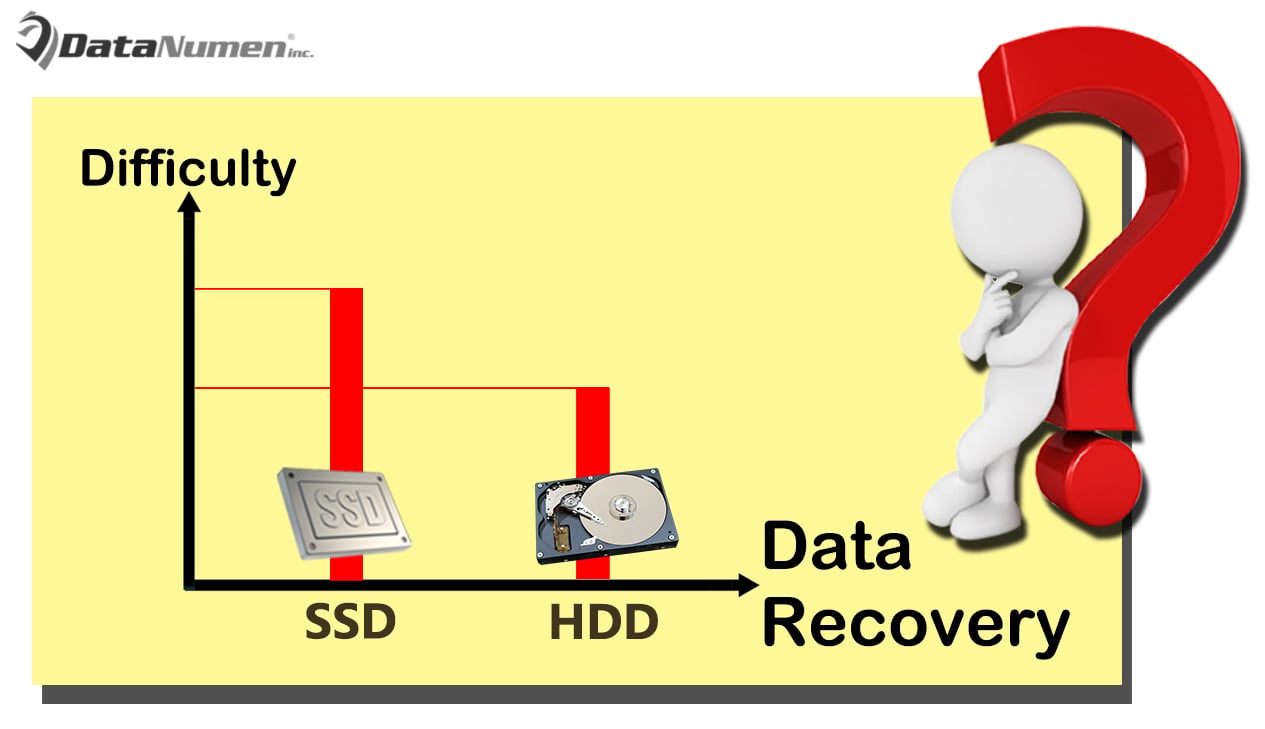Although solid state drive (SSD) has multiple advantages over traditional hard disk drive (HDD), recovering data from solid state drive is more difficult than hard disk drive. Now, in this article, we will discuss about this issue elaborately.
More and more users prefer solid state drive (SSD) for both speed and reliability. More specifically, solid state drive uses flash memory to read and write data, so it can be much faster. Plus, as it has no moving components, it can be free of mechanical issues on hard disk drive (HDD). However, it is also an unquestioned fact that solid state drive can fail as well. At that point, the data in it will be corrupted. And you have no choice but to attempt data recovery, like PST recovery, etc.
When it comes to recovering data from solid state drive, there is no denying that its data recovery is more difficult than data recovery on standard hard disk drive. Some users may be suspicious about this point of view. Here we will probe into it from the following perspectives.

1. No Obvious Warnings before SSD Failure
Before a hard disk drive fails, you will discover a very obvious sign –grinding and strange noises due to it moving parts, especially disk head. Unlike it, solid state drive is made from the electronic components, not containing any mechanical components. It doesn’t give much warning before it fails. Hence, generally, you’ll realize its failure when it totally doesn’t work any longer. At that time, recovering data will absolutely all the more difficult.
2. More Difficult to Locate Data on SSD
On the mechanical hard disk drive, data is passed from the controller to the disks magnetically and written to the drive as bits on the platter. Therefore, to read the data, just return to the same location and read magnetic orientation of the bit. In comparison, solid state drive store data more complexly. So as to block flash chip from wear and tear, the location of data stored is always changing. Therefore, in data recovery, it is more difficult to locate the data on solid state drive.
3. TRIM Feature Make Recovery Harder
Moreover, today, most solid state drive always comes with TRIM feature enabled automatically. So-called TRIM will automatically and immediately clear the data when it gets deleted, no matter intentionally or accidentally. That is to say, when you delete any files by mistake, TRIM will tend to erase it at once. In this respect, unquestionably, data recovery on solid state drive is much harder.
4. Less Recovery Experience and Knowledge of SSD
Though in recent years solid state drive has become increasing popular, about it, there is still less systematic knowledge than hard disk drive. There is no denying that hard disk drive has taken up data storage market for long time. So, there are far more data recovery experiences, skills, data extraction tools and specialized knowledges about hard disk drive. Therefore, recovering data on hard disk drive is generally easier than solid state drive.
Author Introduction:
Shirley Zhang is a data recovery expert in DataNumen, Inc., which is the world leader in data recovery technologies, including mdf recovery and outlook repair software products. For more information visit www.datanumen.com